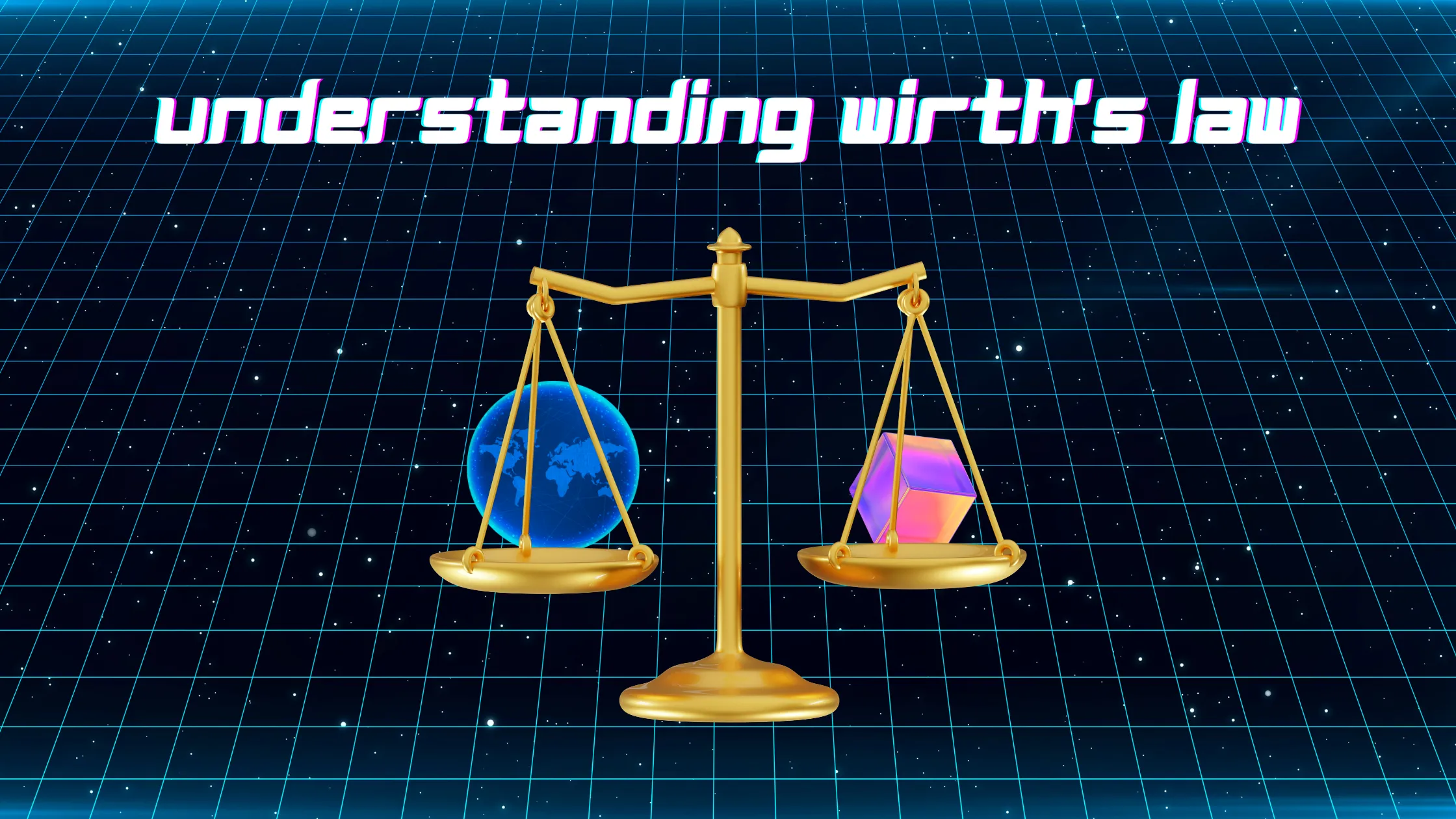Recently, while browsing the potato.cheap website, I stumbled upon an intriguing topic about Wirth’s Law on the homepage. This piqued my curiosity and inspired me to delve deeper into the subject.
Wirth’s Law, named after the renowned Swiss computer scientist Niklaus Wirth, presents a somewhat paradoxical idea in today’s tech-savvy world: software tends to slow down faster than hardware speeds up. At first glance, this seems at odds with the rapid advancements we often see in hardware technology. Yet, this phenomenon has significant implications for both developers and users alike. In this post, I aim to explore Wirth’s Law in detail, shedding light on its impact and how it fundamentally influences our interaction with technology in the modern era.
The Origin of Wirth’s Law
Niklaus Wirth, known for his contributions to programming language design, noted in 1995 that software efficiency was deteriorating at a pace that outstripped the speed improvements of hardware. This observation was based on his experience with software development, where he noticed that new software versions were often slower than their predecessors, despite running on faster hardware.
Why Does It Occur?
There are several factors contributing to Wirth’s Law:
Feature Creep: As software evolves, features are added to meet new requirements or consumer demands. While these features add functionality, they also consume more resources, leading to slower performance.
Software Abstraction: Modern software development heavily relies on layers of abstraction to simplify programming. These abstractions, though beneficial for development speed and ease, often result in less efficient code.
Resource Availability: With the advent of powerful hardware, there’s a tendency to be less concerned about optimizing resource usage, leading to bloated software.
Complexity Management: As software becomes more complex, the overhead required to manage this complexity can impact performance.
Implications
Wirth’s Law has several implications:
User Experience: Slower software can lead to frustration and decreased productivity, impacting the user experience.
Hardware Upgrades: It can necessitate more frequent hardware upgrades, which has environmental and economic impacts.
Software Optimization: It highlights the importance of software optimization and efficient coding practices.
Combating Wirth’s Law
As developers, we can take steps to mitigate the effects of Wirth’s Law:
Optimization: Focus on optimizing code and resources, even in an era of abundant hardware capabilities.
Balancing Features: Carefully consider the necessity of new features and their impact on performance.
Profiling and Testing: Regularly profile and test software to identify performance bottlenecks.
User Feedback: Listen to user feedback regarding software performance and usability.
Continuous Learning: Stay updated with efficient coding practices and emerging technologies that can help optimize software.
Examples of Wirth’s Law in Web Development
Wirth’s Law, which states that software is getting slower more rapidly than hardware is becoming faster, has significant implications for web app development. Here are some ways in which Wirth’s Law affects web app development:
-
Resource-Intensive Features: Web apps that incorporate resource-intensive features, such as real-time data processing or complex animations, can lead to decreased performance on devices with limited resources. This can result in a poor user experience and decreased productivity, highlighting the importance of efficient software optimization.
-
Software Abstraction in Web Development: Web development often relies on software abstractions to cater to diverse hardware configurations. However, these abstractions can contribute to software bloat and reduced efficiency, in line with the observations of Wirth’s Law.
-
User Experience Impact: The user experience of web apps can be significantly affected by Wirth’s Law. As software becomes slower relative to hardware advancements, users may perceive a decline in app performance, especially when using the latest apps on older devices, highlighting the real-world implications of this phenomenon.
Conclusion
Wirth’s Law reminds us that software development is not just about adding features or relying on hardware improvements. It’s a delicate balance between functionality, efficiency, and user experience. As developers, we play a crucial role in ensuring that our software makes the best use of the available hardware, thus delivering a seamless and efficient experience to the user.
Remember, in the world of software development, efficiency is not just an option; it’s a necessity. Let’s embrace the challenges posed by Wirth’s Law and strive to create software that’s not only feature-rich but also performance-oriented.
